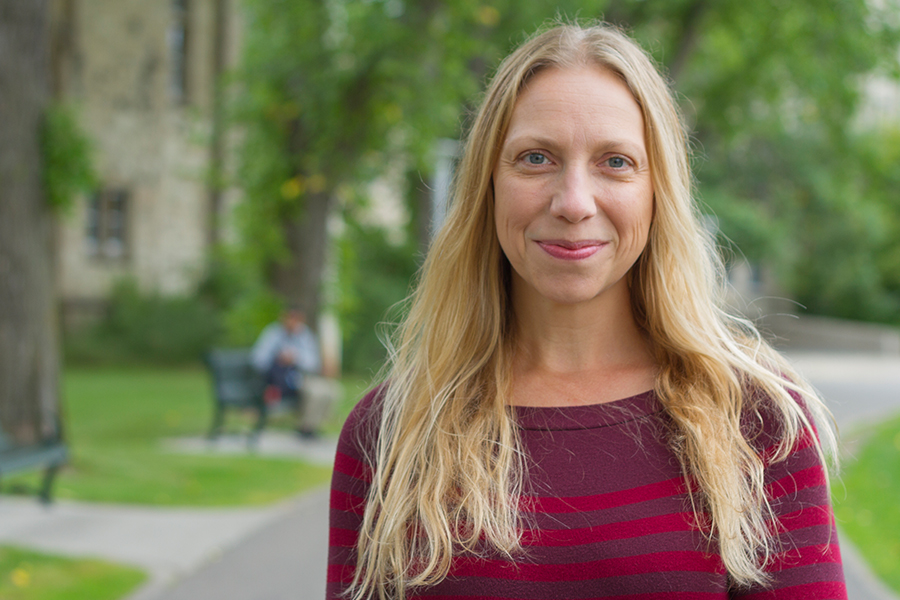
Providing services for students with disabilities
More students with self-identified disabilities are attending the U of S this year than ever before.
By Kris FosterEnsuring those students are on a level academic playing field falls to the Disability Services for Students (DSS) unit, explained Maxine Kinakin, manager and associate registrar (accommodation).
“Our role is to assist the U of S in meeting Saskatchewan Human Rights legislation to accommodate people with disabilities,” said Kinakin, adding that DSS has been at the U of S for about 20 years and has seen student registration increase year after year.
“More than 1,500 students have registered with DSS for the upcoming academic year,” said Kinakin, who has been with DSS for 15 years, 14 as manager. “Students are in all years, all colleges and all programs.”
Other than the increase in the number of students registering through DSS—from 2011 to 2016 there has been a 105 per cent overall increase in students registering for accommodation—one of the biggest changes Kinakin has witnessed in her time at the U of S is a change you can’t actually see.
“Of that total number of students, about 70 per cent have invisible or hidden disabilities, like mental illness, a learning disability or attention deficit disorder,” she explained, adding that the other 30 per cent have visible disabilities, such as physical disabilities.
So Kinakin and her staff of 10—featuring a range of skills from clinical psychology, social work and special education—meet with disabled students to assess their medical documentation and determine what kind of individual accommodations are required to support his or her success.
DSS does not share a students’ disability because “the diagnosis doesn’t matter as much as the functional limitations caused by the disability because we can implement an accommodation plan that levels the playing field,” said Kinakin.
Most common accommodations, she continued, include allowing more time to write exams, quiet space for writing exams, a reader or scribe during an exam, volunteer note taker, extensions on assignments, or some leeway for absenteeism.
“Some students need to miss class because of dialysis, radiation or medical appointments. In these cases, we need to adjust attendance requirements,” she said.
Kinakin is clear, however, that this is not an advantage for disabled students.
“It is important to recognize that we work with students who have gotten into university on academic merit. Without accommodation, these students couldn’t accurately reflect their abilities and knowledge.”
More than ever before, students are being “diagnosed and treated as they move through elementary and high school. We see these plans and then adapt them for the post-secondary environment.”
DSS also develops accommodation plans for clinical settings in health science disciplines. “We work with a team that looks at the essential skills and requirements of the profession and what accommodations would benefit the students. This shows the students what’s possible and how they can be accommodated to succeed,” she said.
One other major change Kinakin has witnessed in her time at the U of S is that there is more understanding of disabilities and the need to accommodate students.
“We work with faculty and staff so they understand this. Students don’t feel like they have to hide their disabilities because there is an understanding and less of a stigma,” Kinakin said.
For Kinakin, the results speak volumes of the work of DSS. “Every year, disabled students graduate from every college. That’s a level playing field.”

